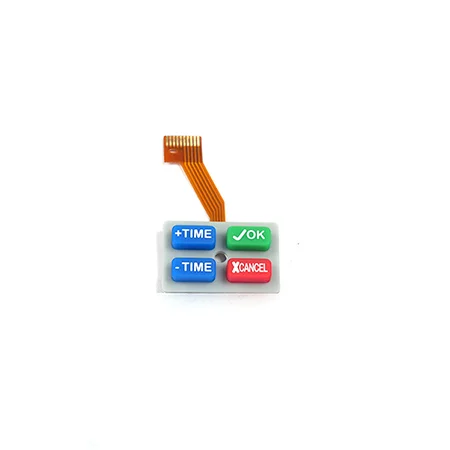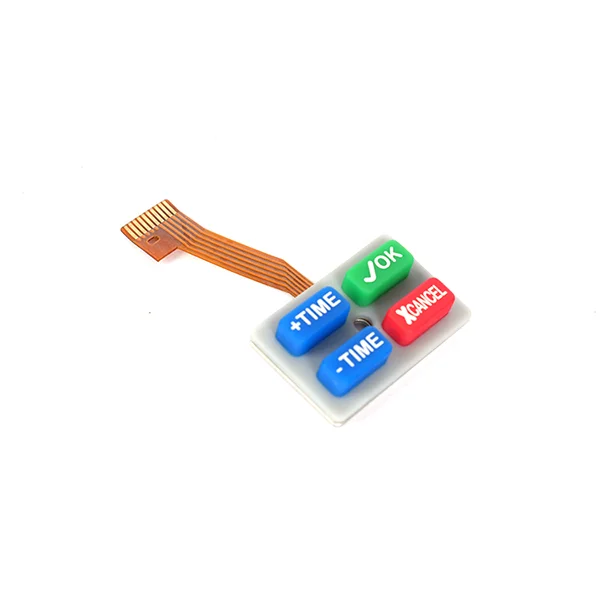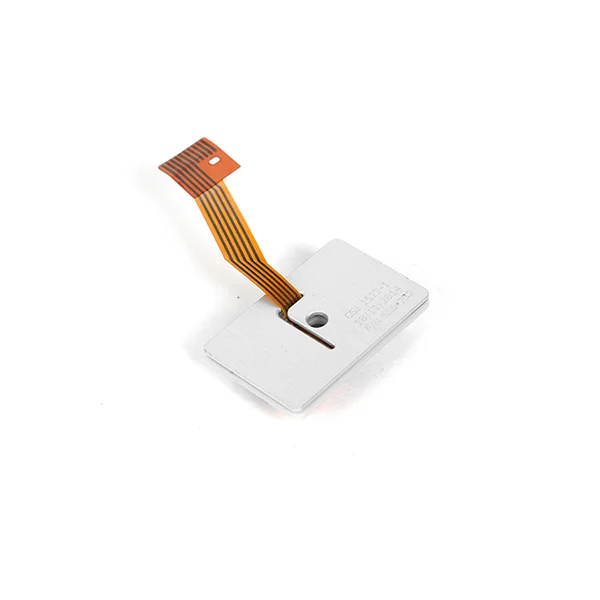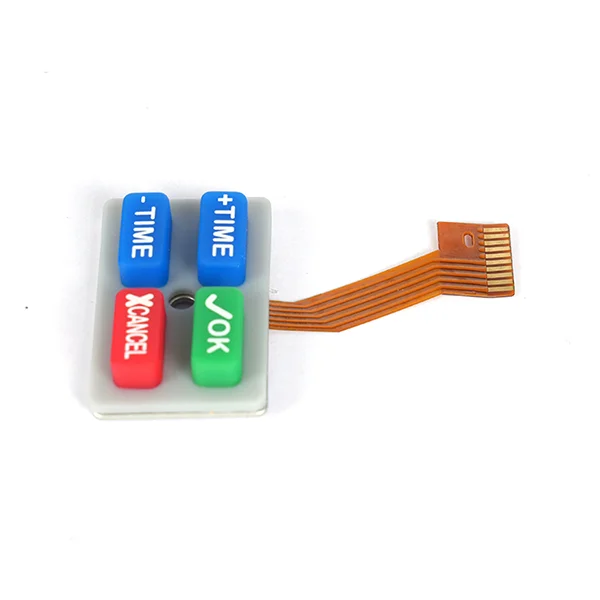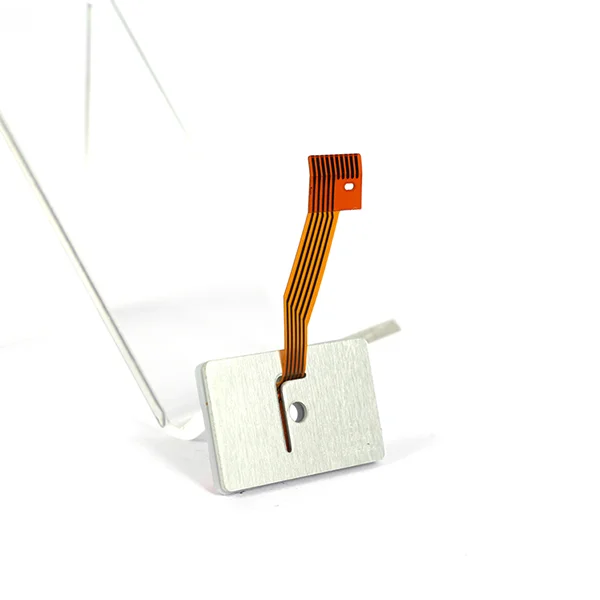FPC membrane switch in healthy industry
FPC membrane switches find extensive applications in analytical instruments, serving as integrated components that enhance user interaction and device control.
-
Panel material:PVC, PC, PET
-
Rebound time:<=6ms
-
Loop resistance:≤ 80Ω (within 40cm of a single key return route)
-
Insulation resistance:>=100VDC
-
Trip force:160~450g
| Basic Parameters of Tactile Membrane Switch | |
| Max. Panel size | 600*800mm |
| Max. Panel size (with emboss) | 400*500mm |
| Paste | silver paste, carbon paste |
| Ink color | red, black, blue, white, yellow, green, purple, etc |
| Trace width | 0.15-0.20mm |
| LED spec. | 0402, 0603, 0805, 1210 |
| Wire length | Per customer requirements |
| Waterproof class | IP65 |
| Connector | female pin, male pin |
| Metal dome types | triangle, for-legs, circle |
| Trip force (metal dome) | 280g, 340g, 450g |
| Travel (metal dome) | 0.35-0.71 |
| Diameter (metal dome) | 8.4mm, 10mm, 12.2mm |
| Surface treatment (metal dome) | gold plating, nickle plating, stainless |
| Back adhesive | DSMS, 3M, SOKEN |
| Citcuit board option | FPC, PCB, Aluminum |
| Panel material | PET, PC, TPU, PMMA |
Tactile membrane switches provide feedback when activated by a finger or actuator. This tactile response improves user experience in situations where alternative feedback methods are limited, or confirming the switch activation is critical.
Manufacturing Process:
FPC membrane switch panels can be produced using polyester or polyimide (e.g., Kapton) as the base material, depending on specific interface requirements. The production involves laminating a thin copper sheet onto the flexible film substrate. A chemical etching process then removes excess copper, leaving behind the desired copper traces forming the circuit.
Compared to PET membrane switch panels, FPC is more expensive, primarily due to the substantial use of copper foil and, in some cases, gold (surface treatment). Although copper and gold prices are expected to rise, the higher cost of FPC is justified by its stability and reliability. FPC allows for concentrated dense lines on a small copper flex circuit. The use of double panels and multipanels enables installing more components in a smaller area, resulting in smaller product dimensions—an advantage unmatched by PET circuits. FPC also offers benefits in electrical properties, with lower resistance due to the absence of bridging and throughhole printing. The ZIF tail of the FPC line can achieve a spacing as small as 0.05 mm, allowing intricate and compact designs.
Contact us online

